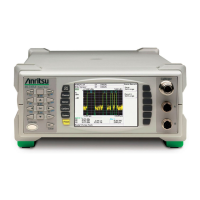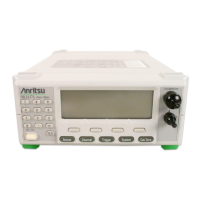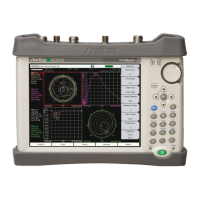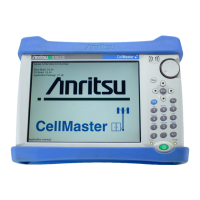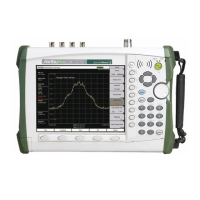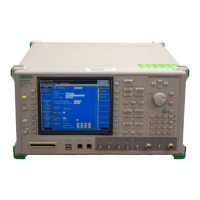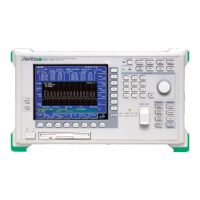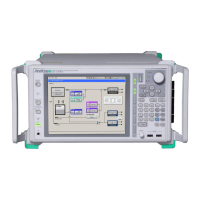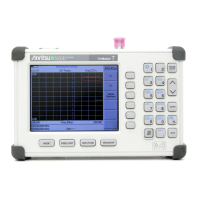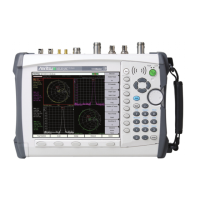Chapter 3 — Performance Verification 3-7 50 MHz Calibrator Power Level (All Models)
ML248xx, ML249xA MM PN: 13000-00164 Rev. K 3-11
P
meas
Calculation
1. Use the equation below to determine P
meas
(the reference calibrator output power in Watts). Start by
finding the Mismatch (M), then using this number, along with V0, V1, V
comp
, R, and EE to solve for
P
meas
. Record values and calculations in “Pmeas Calculation” on page A-6.
2. After P
meas
is determined, the next step is to calculate the expanded uncertainty with coverage factor
K = 2. This is done by using the equations below to get a value for the Expanded Uncertainty (K = 2).
Where:
Worst case value for M (should be used in the P
meas
equation above)
Reflection coefficient magnitude of the 8478B sensor (found in the 8478B calibration
data)
Effective Efficiency of the 8478B sensor (found in the 8478B calibration data)
Effective Efficiency uncertainty of the 8478B sensor (found in the 8478B calibration
data; Needed for uncertainty calculation in Step 2 of this section)
Reflection coefficient magnitude of the ML248xx and ML249xA Reference Calibrator
output; (Needed for uncertainty calculation in Step 2 of this section)
Mount Resistance of the 432A power meter
From Step 15, above
From Step 14, above
From Step 12, above
Calculated from the P
meas
equation above
P
meas
2 V
comp
V
1
V
0
–()V
0
2
V
1
2
–+××
4 REE× M××
-------------------------------------------------------------------------------------
=
M
1 Γ
d
2
–
1 Γ
s
Γ
d
×±()
2
-----------------------------------=
M
1 Γ
d
2
–
1 Γ
s
Γ
d
×±()
2
-----------------------------------=
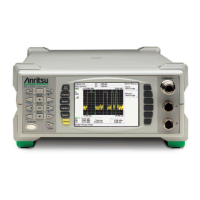
